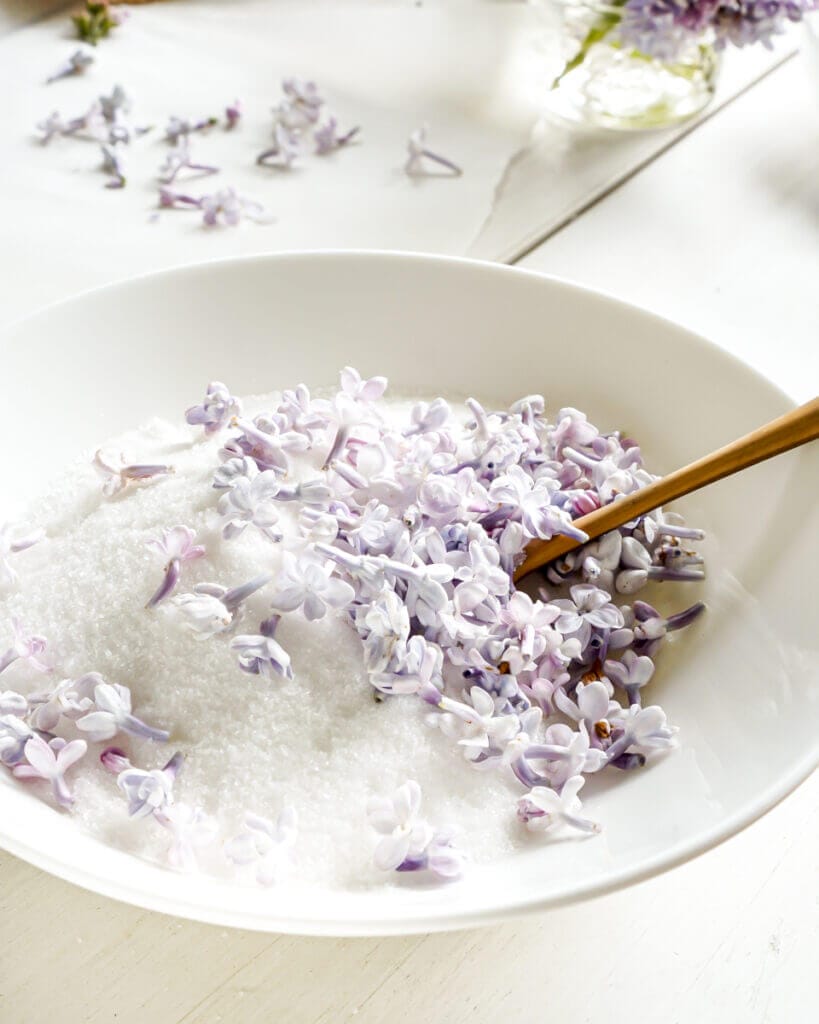
As I press the crystals of sugar and the little purple blooms between my fingers the room fills with the sweet floral scent of lilacs. I feel grounded when I embrace quite moments like this; picking tiny little flower buds, one by one making something new and sweet.
Lilacs are one of my favourite spring flowers. On our drive to the lake you can find fields and fields of wild lilac bushes – their scent fills the air. My eyes brighten with excitement as it’s just about the most spectacular thing I’ve seen in a while.
I long for the beautiful drives in the countryside because they remind me of my years spent living in the country where I had my very own lilac bushes growing in the back. I never once had the idea to make lilac sugar back then (of course, why would I?!!). But my parents have a bunch of lilac trees at their home so I thought this year would be a wonderful time to experiment with some new recipes using lilac sugar.
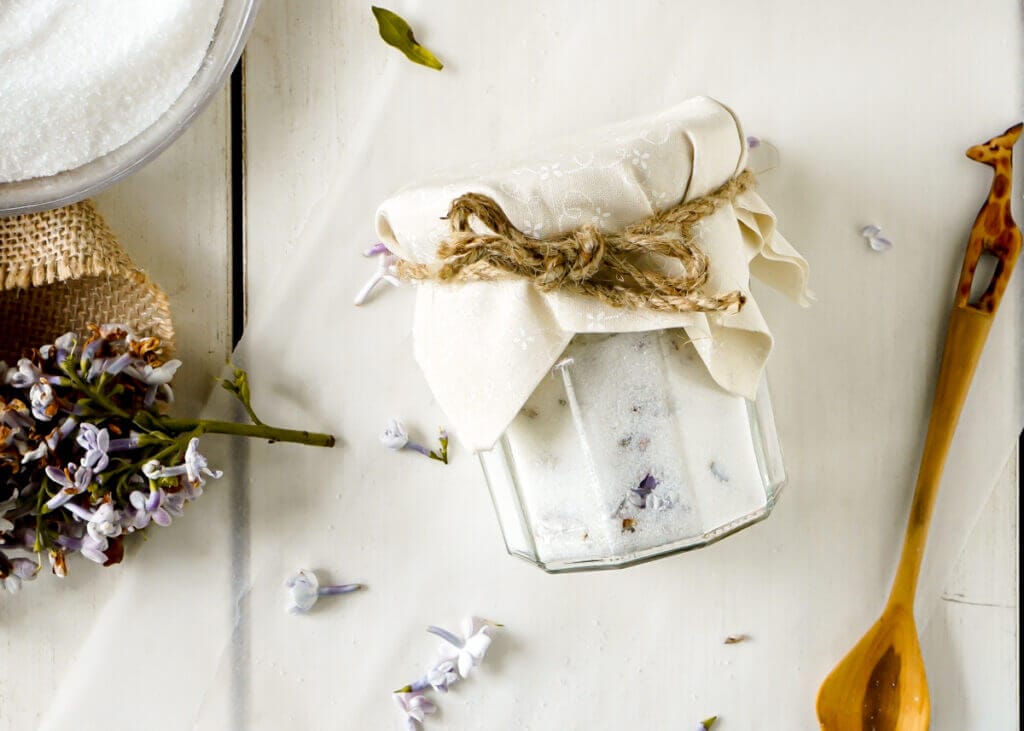
Ingredients
Lilac sugar is a simple yet elegant way to brighten baking and drink recipes. You can fill glass jars of lilac sugar and keep them stored until the following season. Their delicate fragrance absorbs wonderfully into the sugar crystals. If you are able to get your hands on some beautiful lilac flowers you can start jarring and sugaring them now. You should leave your lilac sugar for a week to let the flavours absorb into the crystals before using it.
- Fresh Lilac Blooms
- Granulated Sugar
- Mason Jars
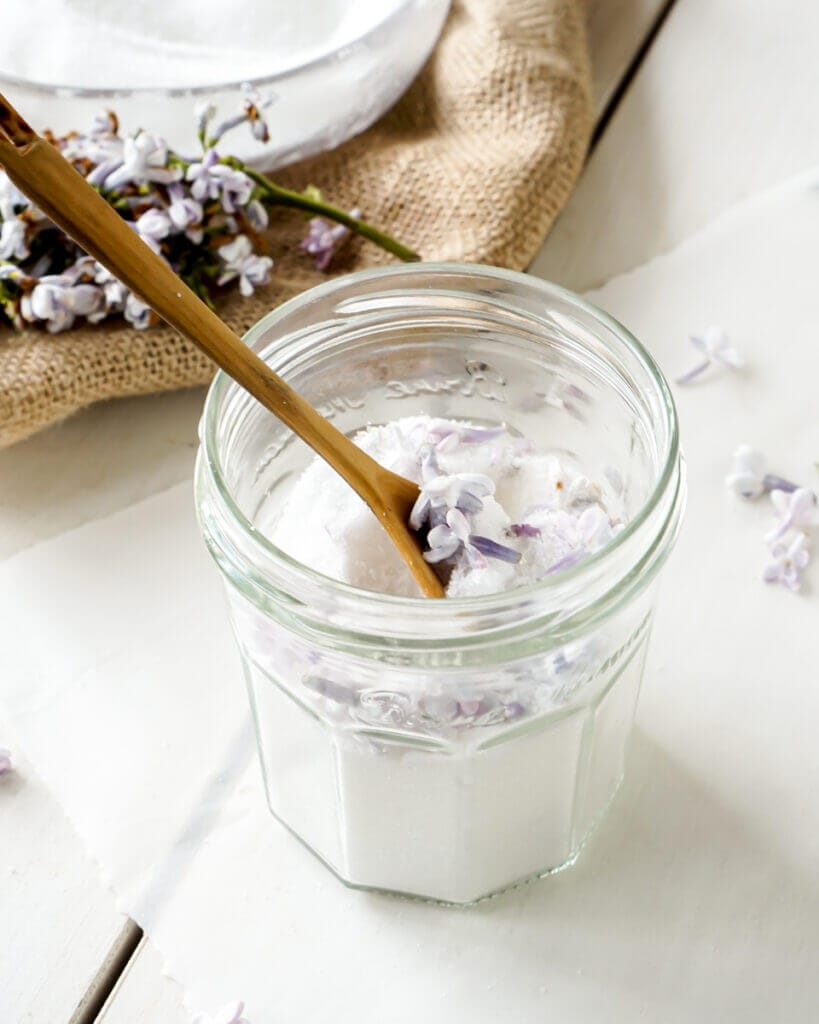
How To Use Lilac Sugar
- Sweeten tea or make summer cocktails with a spoonful of the sugar. To make a simple syrup dissolve the sugar in hot water.
- Rim a glass for a summer cocktail.
- Sprinkle on top of sugar cookies.
- Use as you would use plain sugar in baked goods; like cakes and cookies for a delicate lilac flavour. Simply replace granulated sugar with lilac sugar at a 1:1 ratio.
- Make lilac whipping cream to dollop on scones and desserts (or strawberry shortcakes). Add sugar to whipping cream and beat until soft peaks form.
How To Make Lilac Sugar
Step One: Pick lilac blooms and trim leaves and brown spots. Check for any bugs or little critters and give each lilac a good shake. I like to pick lilacs after a rainfall as they have been freshly washed by nature.
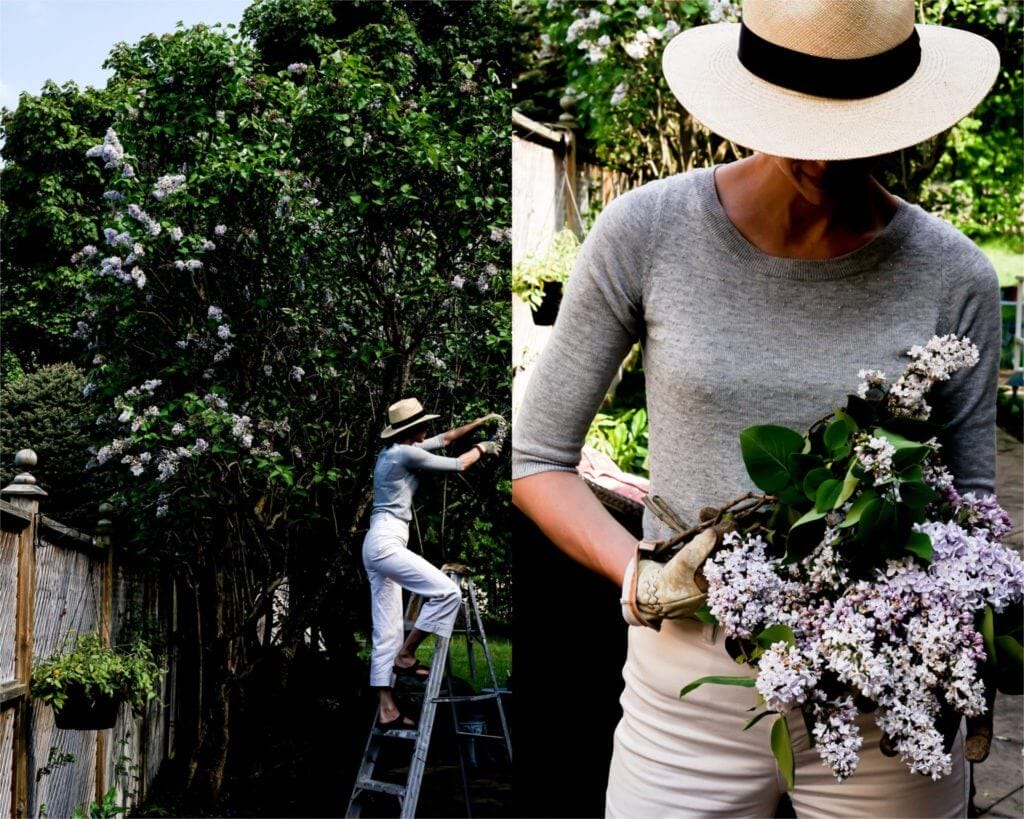
Step Two: Pick flowers off their buds. In a large bowl add sugar and lilac flowers together.
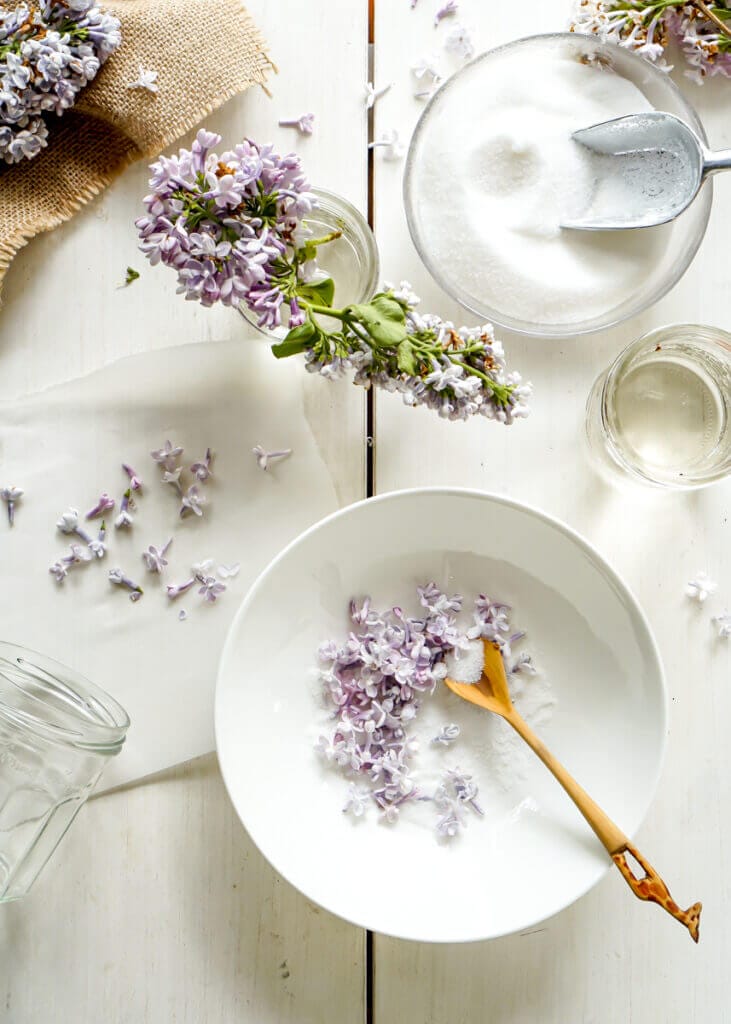
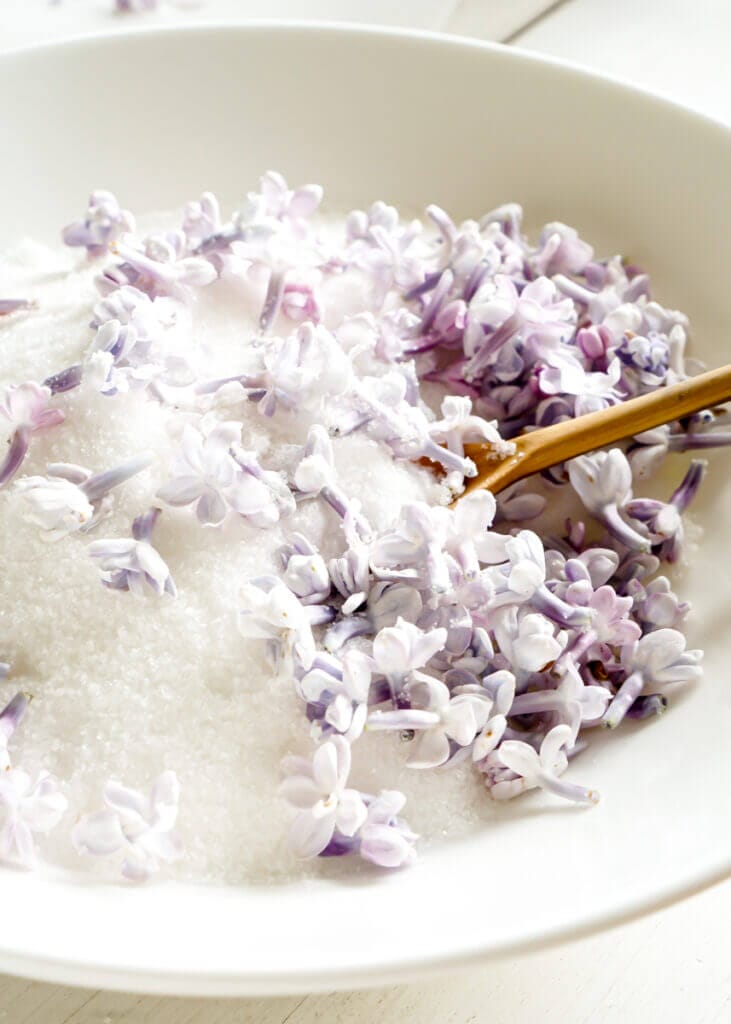
Step Three: Using your fingers rub the flowers into the sugar to release the oils. Add lilac sugar to a glass jar and leave for one week for the flavours to be fully absorbed.

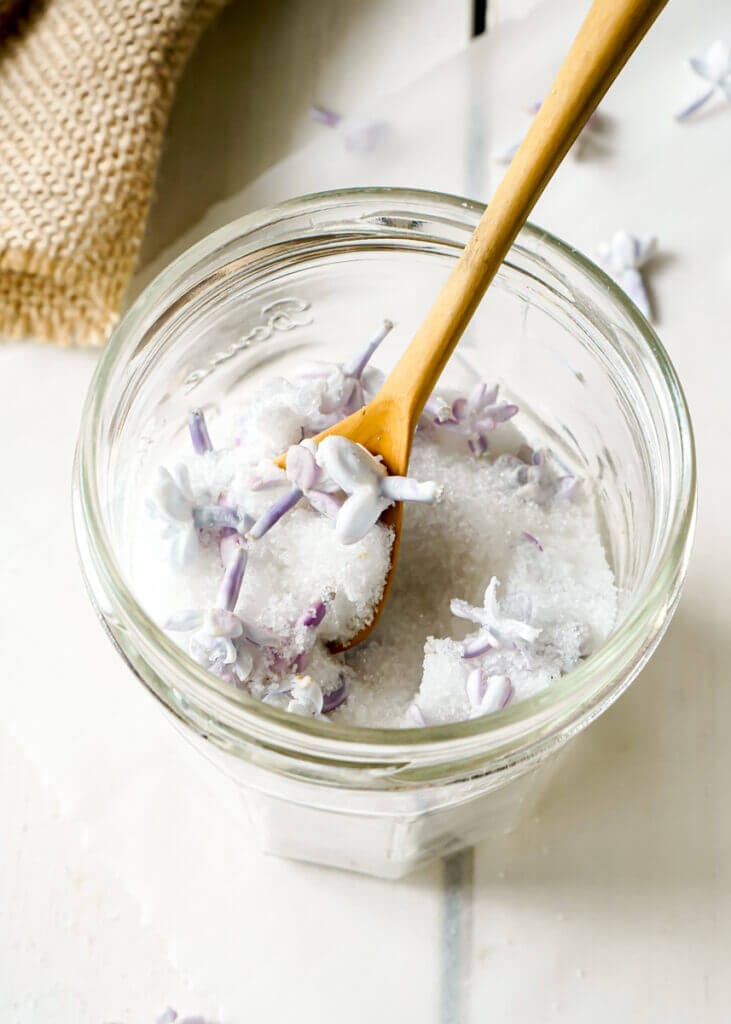
Lilac Baking List
I hope this post inspires you to look differently at how to combine nature into your cooking and baking. Happy Baking!
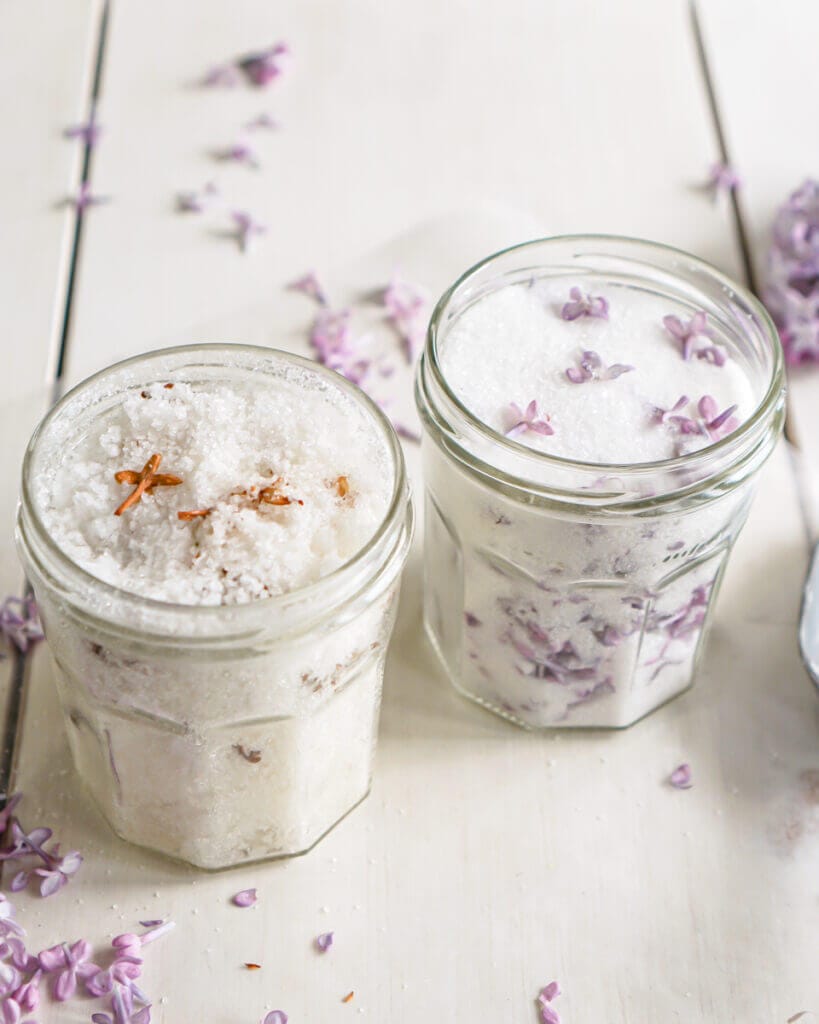
Lilac Sugar
A simple yet elegant way to brighten baking and drink recipes. Lilac flowers bloom in the spring, make jars and store lilac sugar until the following season.
- Prep Time: 15 mins
- Total Time: 15 mins
- Yield: 1 Cup 1x
- Category: Baking & Drinks
- Cuisine: French
Ingredients
- 1 cup granulated sugar
- 1/3 cup fresh lilac flowers (stems removed)
- 1 glass jar
Instructions
- Pick fresh lilacs and give them a good shake. Check for any bugs or little critters (I picked my lilacs after a fresh rainfall).
- Pick flowers off their buds and remove any green leaves, stems or browning flowers.
- In a large bowl add sugar and lilac flowers together. Using your fingers rub the flowers into the sugar to release the oils.
- Add lilac sugar to a glass jar and leave for one week for the flavours to be fully absorbed.
- Use lilac sugar in baking or to sweeten tea or cocktails.
Notes
The sugar will clump together as the lilacs will give off moisture; every few days shake the jar to break the sugar up. The flowers will start to brown as well. Don’t panic, this is completely normal!
You can make as much or as little lilac sugar as you’d like, and you can add more or less flowers depending on the floral strength you prefer.
Nutrition
- Serving Size: 1 Tablespoon
- Calories: 47
- Sugar: 12.5g
- Sodium: 0
- Fat: 0
- Saturated Fat: 0
- Unsaturated Fat: 0
- Trans Fat: 0
- Carbohydrates: 12.5g
- Fiber: 0
- Protein: 0
- Cholesterol: 0
FAQ’S
Lilac flowers bloom in the spring to early summer. They typically start to bloom when they can receive approx. 6 hours of sunlight a day and the air is still cool; May to June.
Lilac sugar will last a very long time, approx. 1-2 years depending on the moisture content in the jar. The sugar acts as a preservative but the flowers give moisture to the sugar. Check sugar around the 1 year mark before using.
Lilac sugar can be used in many ways and is most commonly used to sweeten cocktails, tea, herbal drinks and baking. There are many recipes that use lilac sugar in replacement of regular sugar which will give earthy floral notes to baking and cooking such as blackberry lilac compote and lilac shortbread cookies. It can also be used to make your own body scrub.
Unlike the floral bouquet that lilacs give, their taste is very different from their aroma. They have an earthy taste somewhat bitter with a slight floral scent. It is not as one expects and is more of an acquired taste.
You may also like:
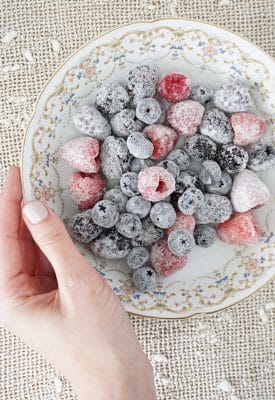


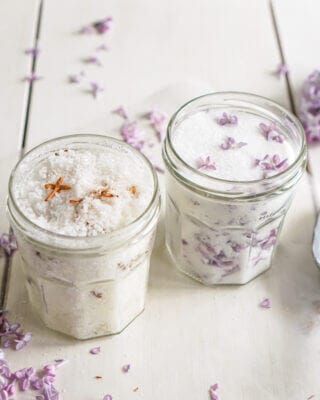

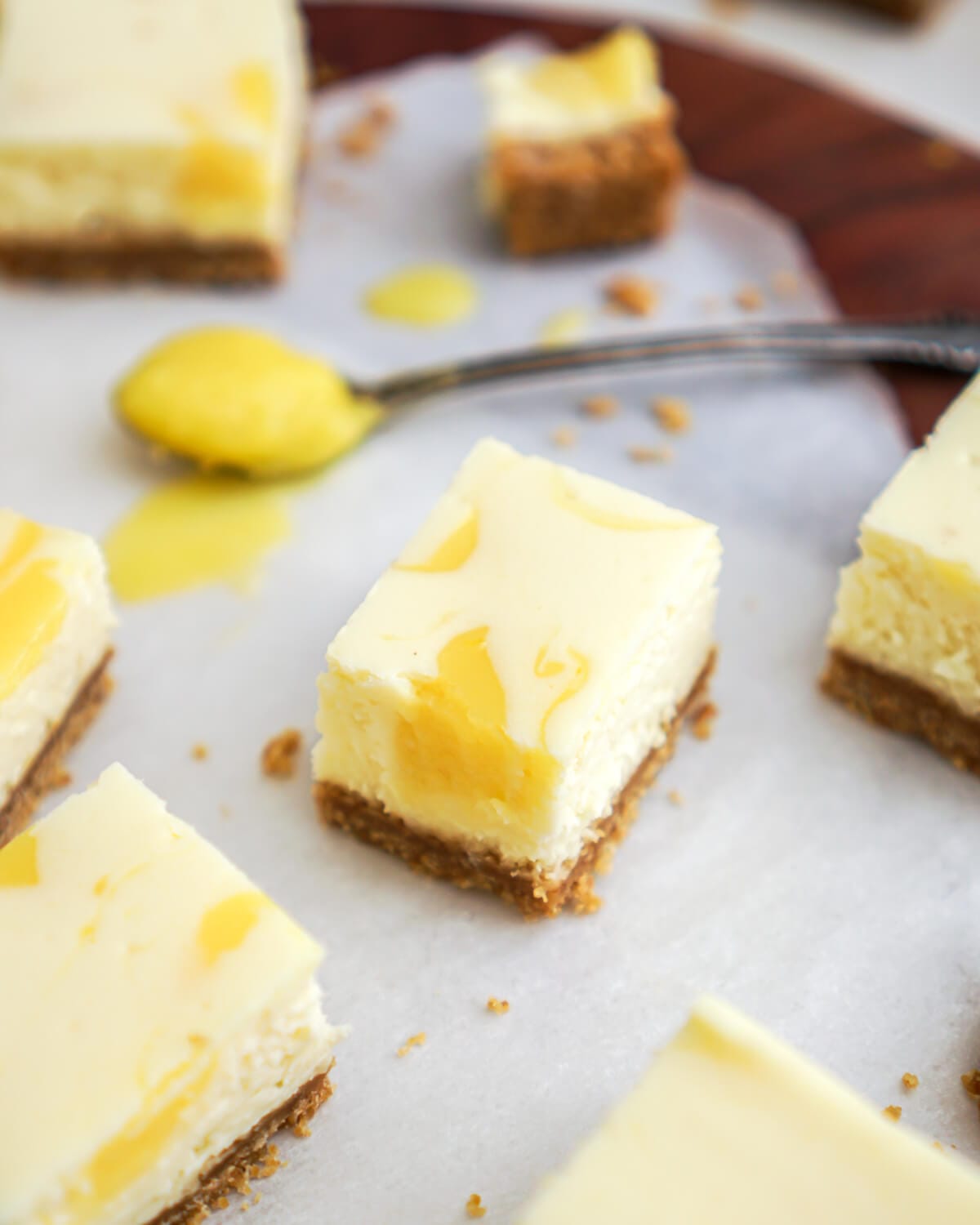
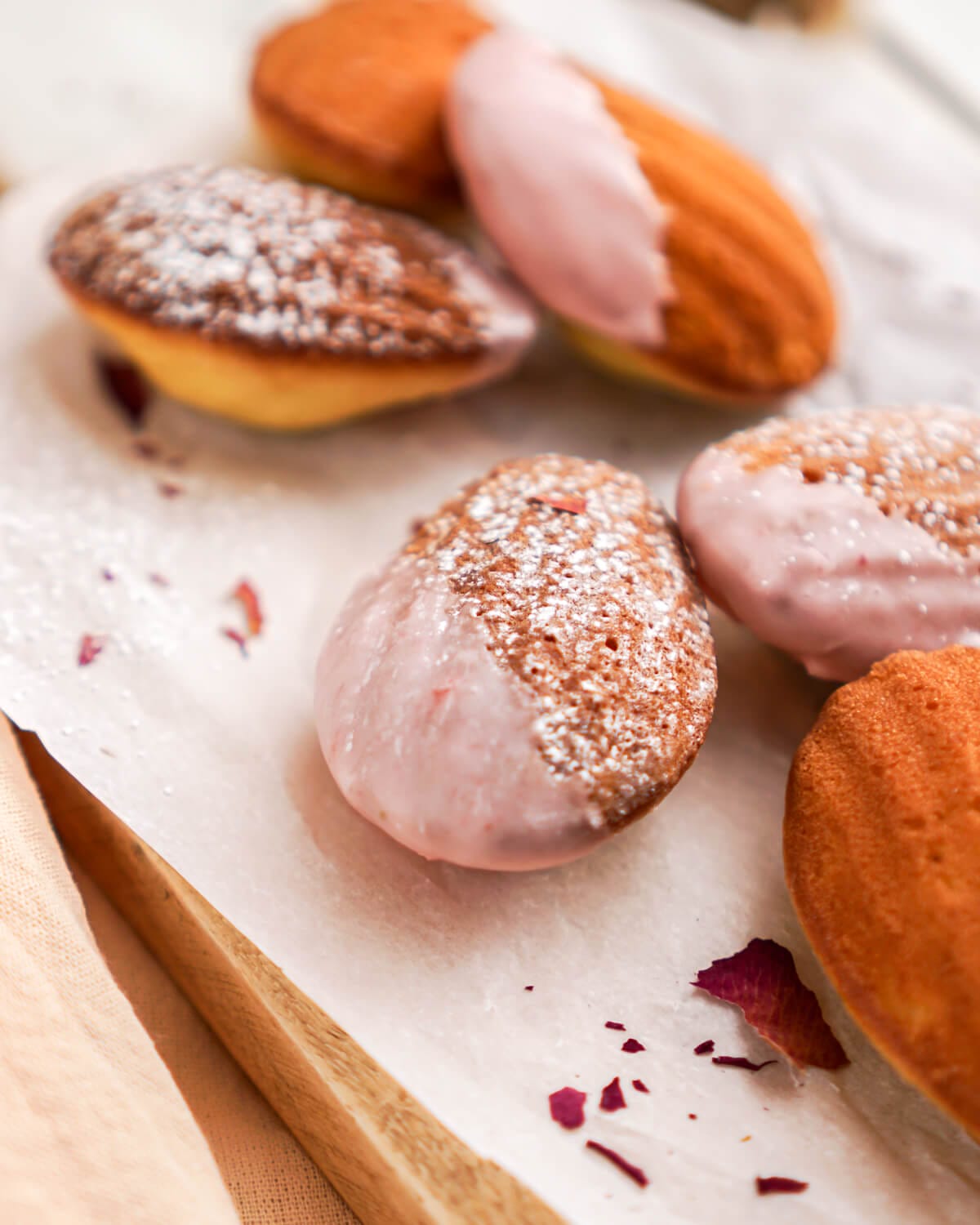
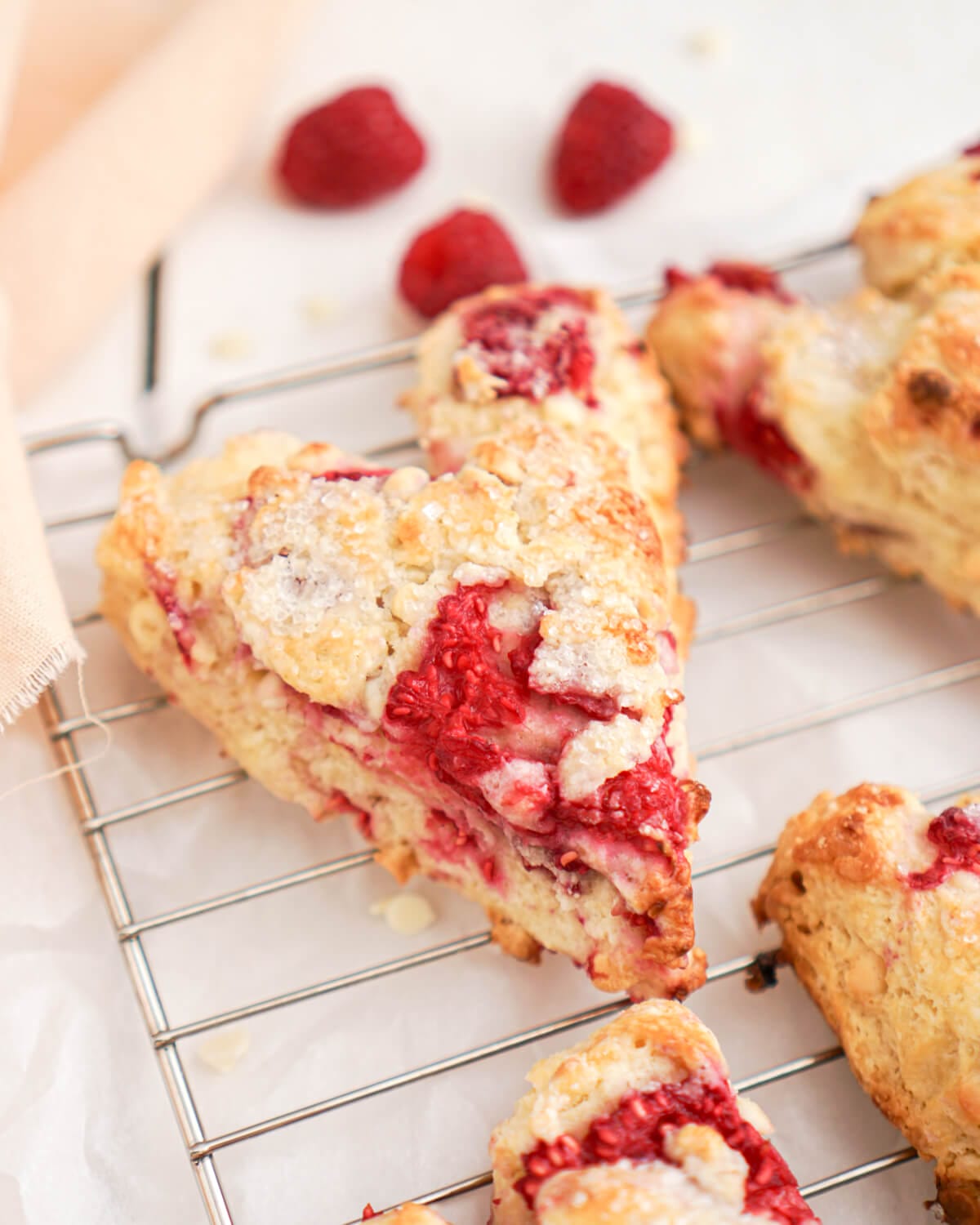
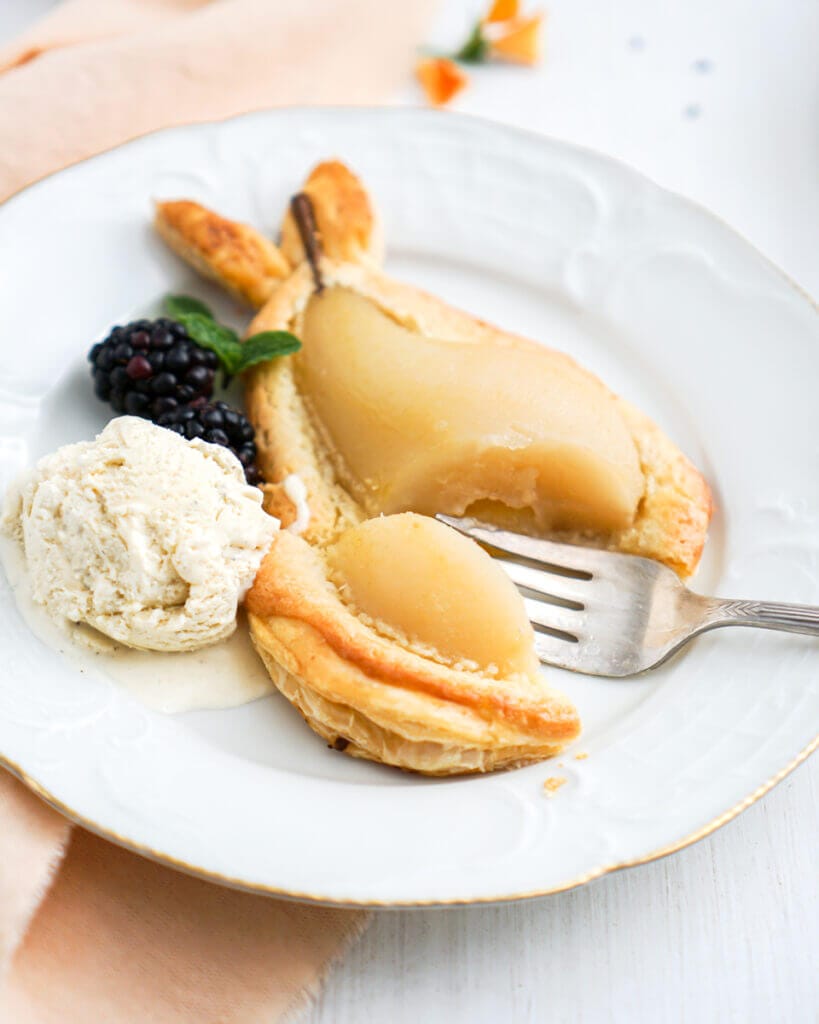
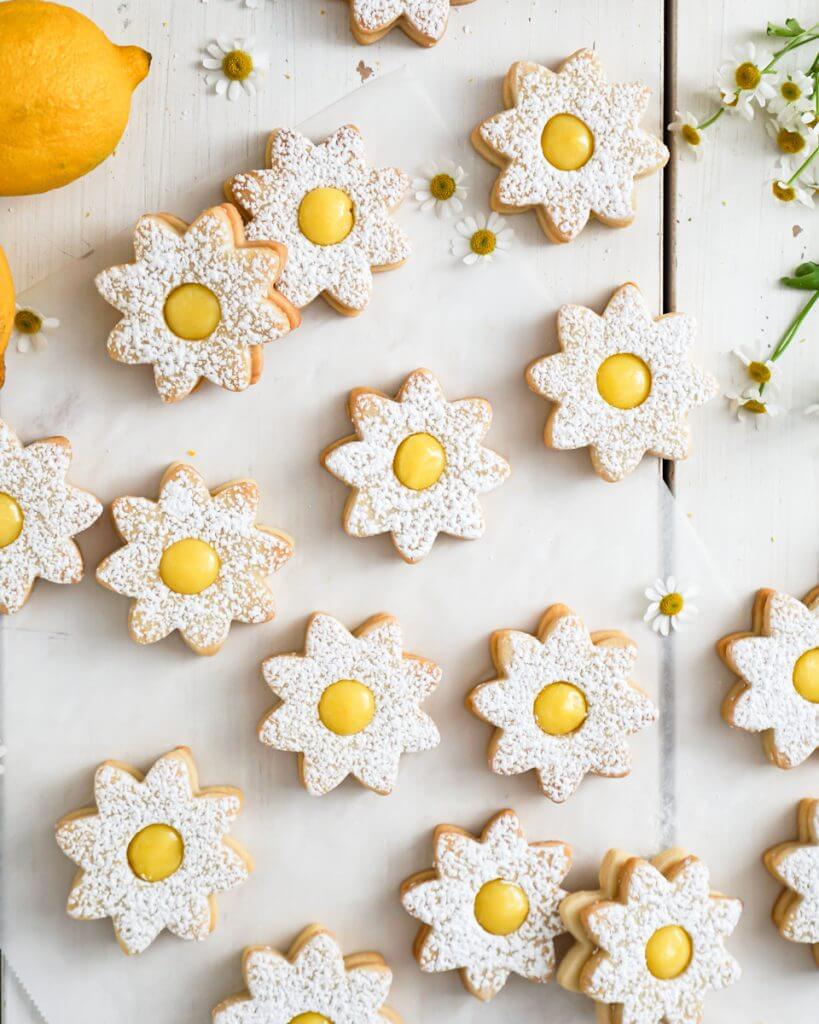

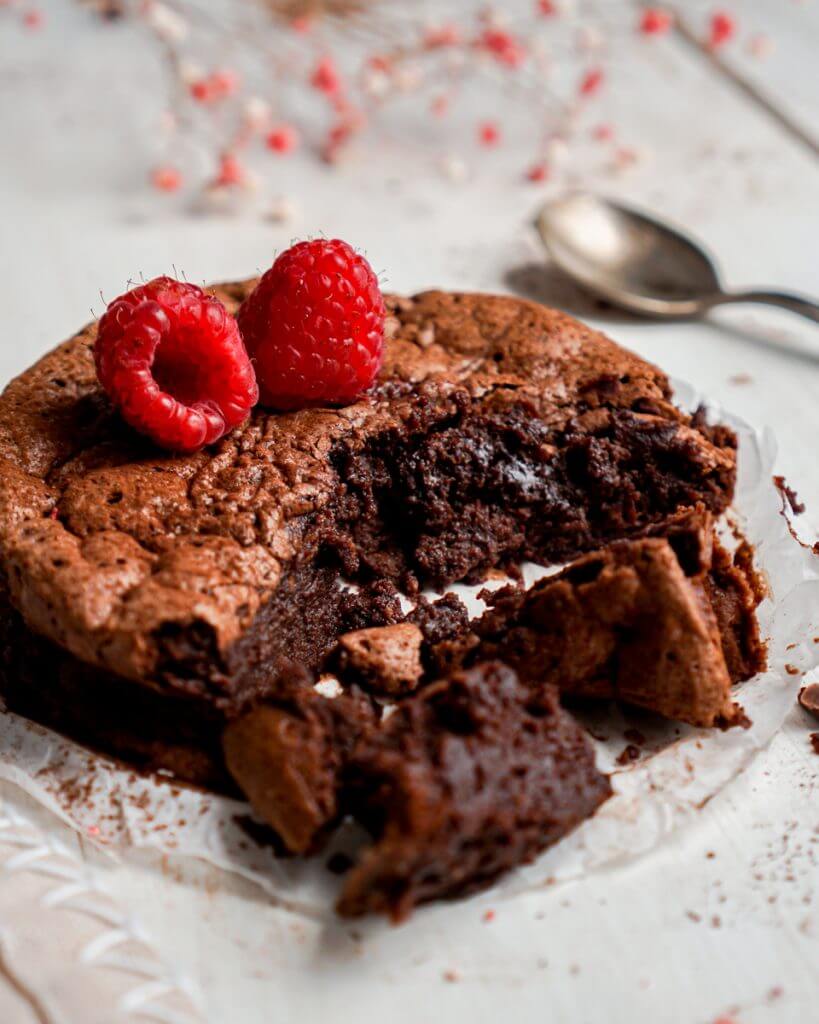
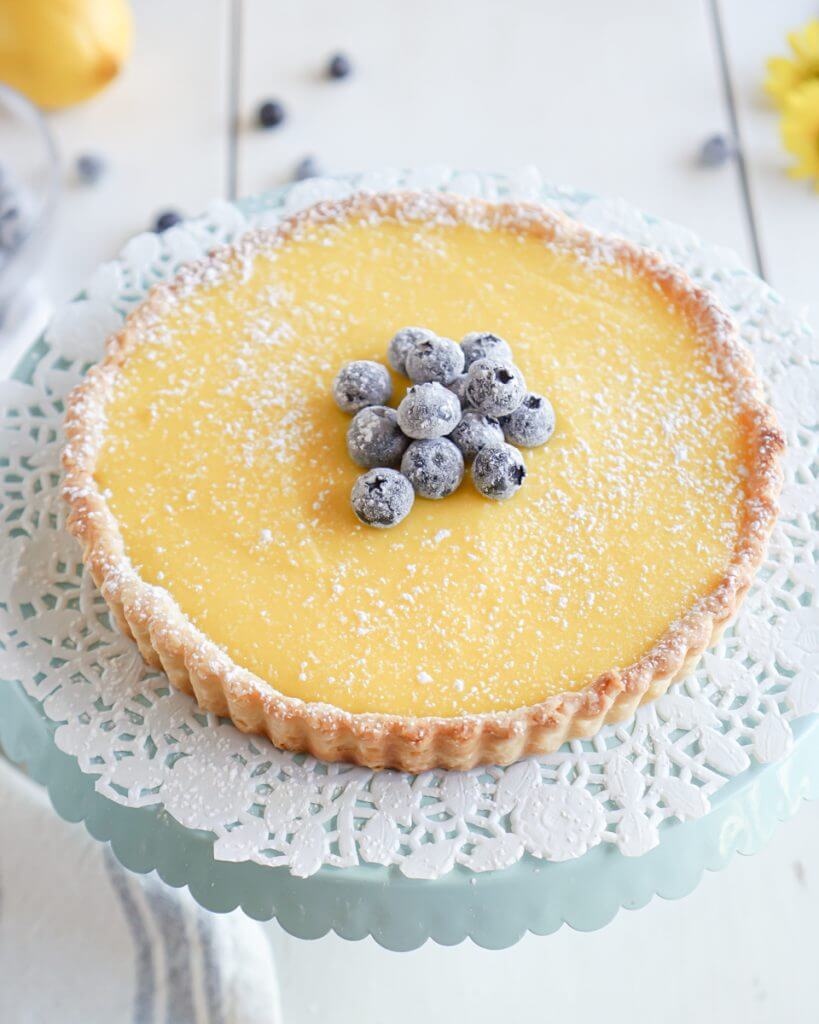
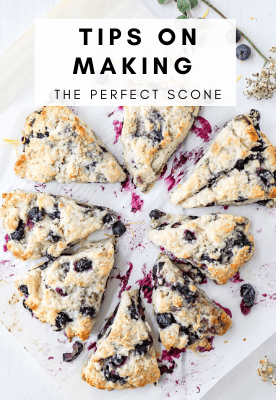




Leave a Rating and Comment!
I love hearing from you! Leave a comment with any questions or how your recipe turned out (your email address will not be published)!
Hi! Your recipe says to rub the flowers and sugar together to release oils. Am I crushing the flowers? Thanks!
Hi Alison, you simply rub the sugar and flowers together with your fingers. Mixing everything together to release the oils, no crushing required.
I made this but I think it was a huge fail, not because of the recipe or instructions, I simply failed to get the flowers at their prime and when I made the lilac sugar it didn’t smell “lilacky” but instead, it smelt more like a hay bail. My flowers also instead of being white and purple turned brown after like 72hrs in the sugar. Needless to say, I WILL try again but with better prime flowers. I’m determined to make the lilac cookies on this blog. (I feel like good lilac flowers are like avocados, brief window to get em while they’re good)
Alexandra I had a little giggle reading this comment, love your honesty. Thank you for sharing! I will admit the flavour of lilacs may not be for everyone. It has strong earthy notes and as it dries in the sugar it looses its colour and turns pale brown. I definitely agree its best to use fresh blooming lilacs though! Give it another go next season and maybe start with the blackberry lilac compote where the flavours are lighter and infused. Happy Baking!
Is it possible to add too many flowers? I’m on day 4 and things seem more than clumpy. I wish there were pictures somewhere of this stage. Do I maybe add more sugar? S.O.S
Hi Amy, it’s normal to see the sugar get moist and clumpy. If the lilacs were wet to begin with they may cause even more moisture. It shouldn’t be a problem though. Adding more sugar may help if you are concerned but it will weaken the strength of the flavour. Some people don’t mind that and only want a mind flavour. I’m happy to take a further look if you want to send me pictures, you can email me at [email protected]
Hope that helps.
I had so much fun making this sugar. I’m now in the waiting stage but can’t wait to use it in some recipes. I’m thinking about making ice tea with it!
That’s so great to hear Jenn, I love making lilac sugar too (I find it so relaxing). Can’t wait to hear how the ice tea works out, I love that idea!
I would like to make this recipe for cocktails but I live in Parkdale, the west end of downtown Toronto. Where would I go for lilacs….? I live on the 9th floor of a 9 story building, what should I do?
Hey Colin, I’d suggested asking any friends if they have lilac trees in their neighbourhood or on their property. You’ll only need a a few blooms to make the sugar. In the past I’ve stopped on the side of a road to cut a few off branches myself (but that’s between me and you lol!). But you’d better hurry as the lilac are coming to an end. Best of luck!!